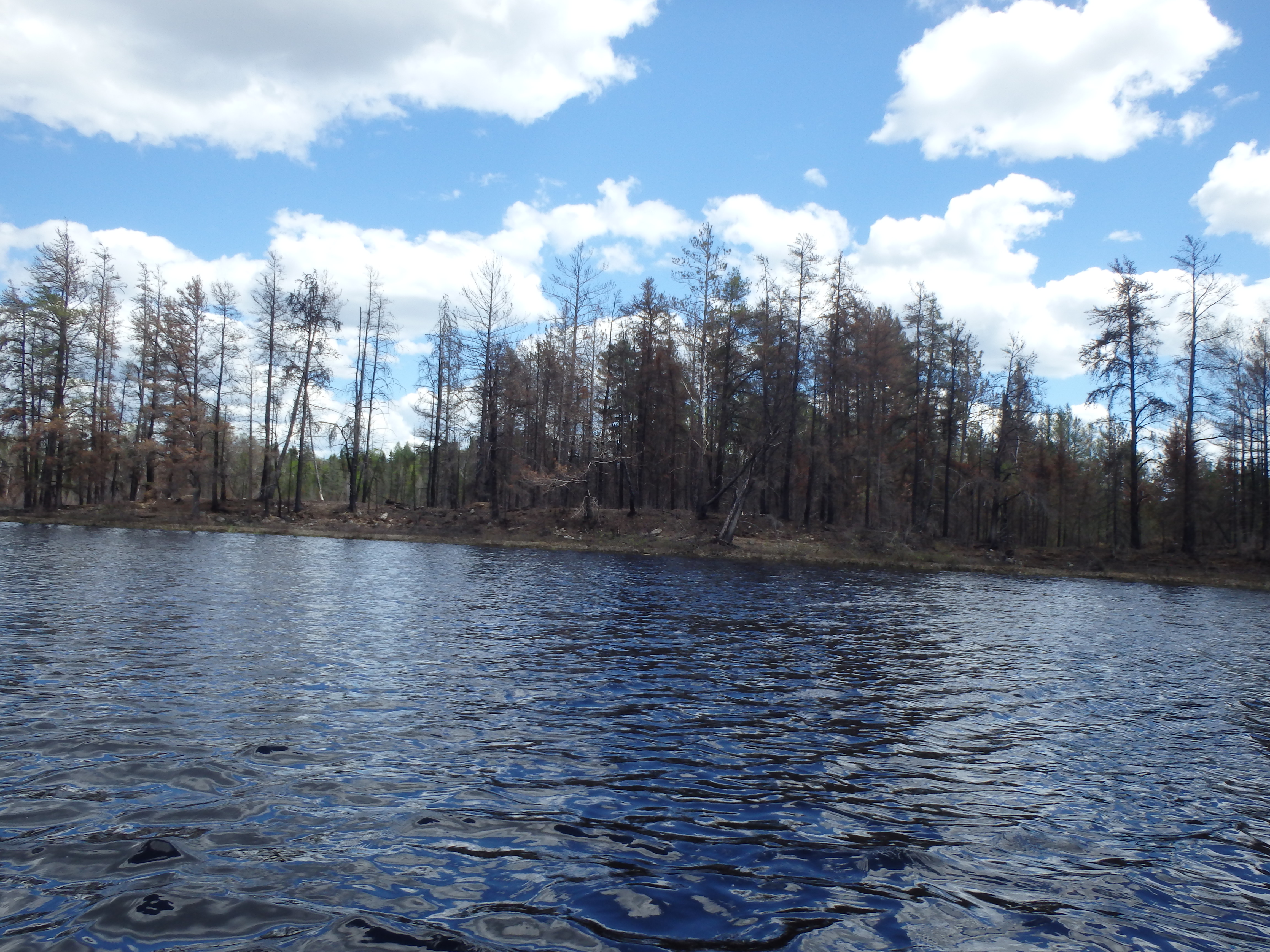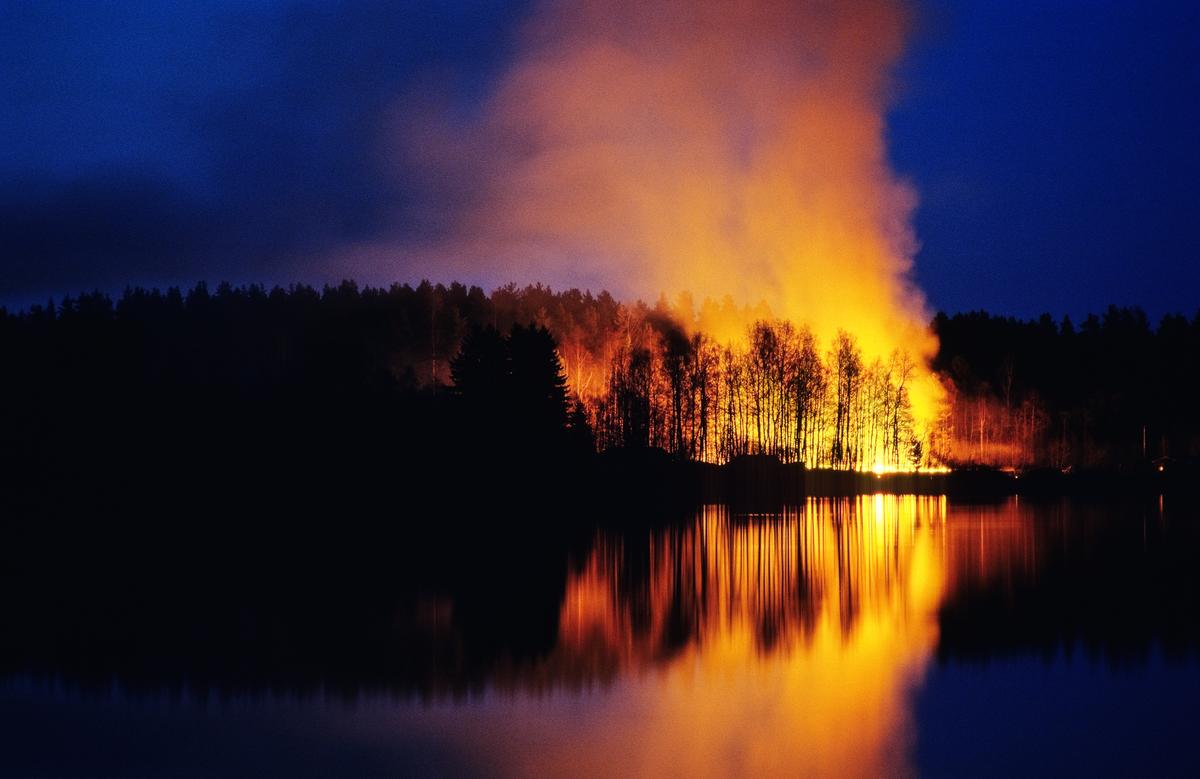Wildfires in northern Minnesota are increasing – the number, the size and the intensity. Within most folks' memories are the Ham Lake Fire (2007), Pagami Creek Fire (2012) and most recently, the Greenwood Fire (2021). Each scorched large swaths of the state’s prized wilderness areas and challenged humans who were too close.
And maybe because it’s a more recent phenomenon for the midwest – the western U.S. is getting uncomfortably good at fighting wildfires – its environmental impacts are not well studied here.
Christopher Filstrup, NRRI applied limnologist, took the opportunity of the Greenwood Fire to initiate a study on wildfire impacts to lake water quality.
Close to Home

“We had this huge wildfire right in our backyard and as the smoke descended on Duluth I thought, wow, how is this disturbance going to impact the forested landscape?” said Filstrup. “I study lakes, so my first thought was, what impact is this having on water quality in these pristine lakes?”
With limited previous research for reference, Filstrup wrote a proposal to the National Science Foundation’s Rapid Response Research grant program and was funded immediately. He pulled together a team with colleagues from Michigan State University, which quickly grew to include seven more agencies, even into Canada.
Their paper, “Fire characteristics and hydrologic connectivity influence short-term responses of north temperate lakes to wildfire” was published in Geophysical Research Letters, August, 2023.
So even though small studies have been done on one or two lakes – mostly in California and the western U.S. – this project turned out to be the largest study in North America of lake responses to a single wildfire event. As the hub of the project, NRRI coordinated deployment of 15 technicians from multiple organizations, sampling 30 lakes – 15 within the burn area and 15 out – within six months of the fire, from May to September.
“The fire was in the fall and we were in the water by May, within a week of ice-out,” said project coordinator and lead field technician Jerry Henneck. “That’s impressive because it usually takes a year to get a grant application in and another year for funding.”
Backcountry Data
The study lakes were mostly back in the deepest reaches of northern Minnesota’s wilderness. Maps didn’t help much to understand how accessible, or not, the areas are. And it was impossible to scout the lakes before they sampled. Even in May, deep snow still covered forest roads.

“We typically sampled six lakes a day,” said Henneck. “Some days we could get to eight or ten if they were near a road. And some days we could only get to three in a 12-hour day, through mud and bogs and swamps and over beaver dams.”
The upside of all this effort is that now there’s additional water quality data collected on 30 lakes that either hadn’t been sampled before or hadn’t been sampled in a really long time. The data is now available for open access to scientists for future reference on state and federal databases.
Water & Wildfires
This preliminary study offered some interesting new information about the impacts of wildfires on lakes, and Filstrup is hoping to build on this knowledge.
- While the scorched earth sent more nutrients (nitrogen and phosphorus) into the lakes, the scientists didn’t see the expected increase in algae growth. Filstrup attributes that to the increase in dissolved organic carbon and sediment, which made the water brown and murky, limiting the light that algae needs to grow.
- Past studies typically relate the percentage of watershed burned to the amount of impact on the water. But this study found that size doesn’t matter. The intensity of the burn and how close the burn is to the shoreline resulted in greater impacts.
- More studies are needed to understand how the nutrient-rich, murky waters of burned lakes affect mercury cycling, including mercury bioaccumulation in fish.
- Scientists from the University of Montreal also collected data on methane and carbon dioxide concentrations from lakes near wildfires as part of a broader study of fire impacts to lakes in North America.
“We are feeling the effects of past fire suppression practices that left a lot of tinder in forests that are now hotter and drier because of climate change,” said Henneck. “Add to that, more fuel from trees killed by emerald ash borer and spruce budworm. There are many things that point toward bigger and more intense fires in our future.”
Contributing organizations with NRRI included: Michigan State University, Department of Fisheries and Wildlife (Ian M. McCullough was lead author on the publication.); Minnesota Pollution Control Agency; U.S. Geological Survey at Pennsylvania State University; University of Montreal, Canada, Interuniversity Research Group in Limnology; University of California-Oakland Cooperative Extension and University of California Santa Barbara Bren School of Environmental Science & Management.
PHOTO TOP: iStock Photo Credit: Eerik
